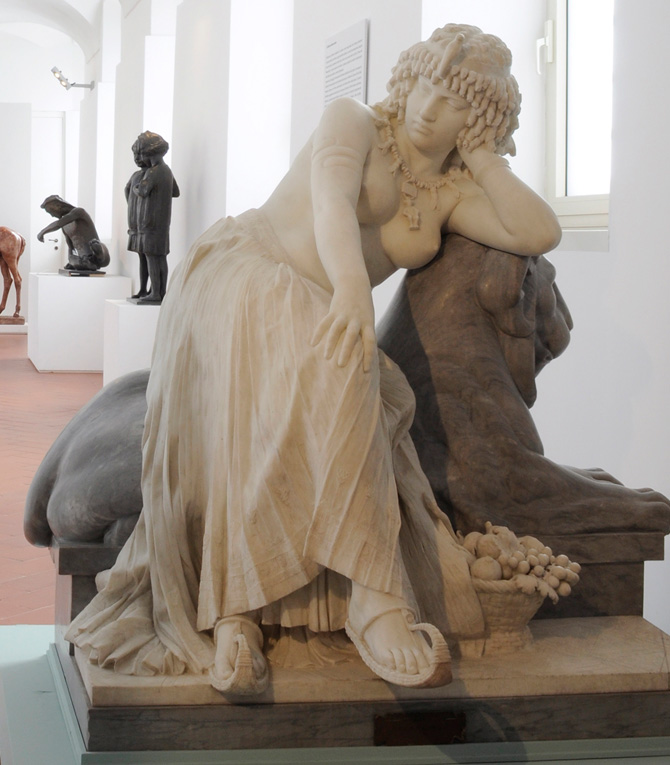Revolt of the Batavi by Romeyn de Hooghe (1704-1706)
"A print by the Dutch artist Romeyn de Hooghe (1645-1708). Subject of this allegory is the revolt of the Batavi (A.D. 69–70) against the Roman Empire. The Batavi was a tribe which lived in the Netherlands during the Roman period and served as soldiers in the Roman army. The tribe revolted against Roman rule in the year A.D. 69 after growing dissatisfaction amongst the Batavi. Helped by the chaos and civil war in the Roman empire after the suicide of emperor Nero (Roman troops stationed in the province left to fight in the civil war - the so-called 'year of the 4 emperors'), the Batavi gained initial successes - they managed to defeat local troops and besieged the camps of the 2 legions V Alaudae and XV Primigenia at Castra Vetera (near modern Xanten). Other local tribes also joined the revolt, swelling the numbers of the rebels. When the Roman emperor Vespasian finally won the civil war, he quickly turned his attantion towards the Netherlands and the rebellious Batavi. A massive Roman army of more then 40.000 troops with 8 legions from Germany, Spain en England was directed toward the rebels. The Roman army closed in upon the Batavi from all directions and the leaders of the Batavi quickly realized that making peace with the Romans was the best way to secure the survival of their people. A peace talk was held on a bridge which in the end made the Batavi to renew their alliance with the roman empire. The Batavian capital was destroyed and rebuilt a few kilometers downstream in a defenseless position. The tenth legion Geminia was permanently stationed near the capital to secure peace. When the Dutch of independence (the 80-years war) broke out in 1568, the Dutch 16th century rebels saw themselves as the successors of the 'freedom fighters of the Batavi'. Dutch propaganda in the 16th and 17th century compared the revolt of the Batavi with their own revolt against the Spanish empire. This print is such an example (the other print of this series is about the 80-years war, linking both events with eachother - although made later after the war had ended in 1648. The print shows several scenes of the revolt: on the left Brinno, leader of the Canninefates - another tribe which joined the revolt of the Batavi, is raised upon his shield to celebrate him being chosen as the general of the Canninefates. On the right side is the Conspiracy of Claudius Civilis - the leader of the Batavi: at a banquet, Claudius Civilis and other tribal leaders agree to rise up against the Romans. In the middle there is an array of mythological figures such as the seagod Poseidon, fame, prosperity. In the background on the right the bridge on which the peace talks were held can be seen. The text at the bottom reads (in Dutch): "Swigt Romen! Brinio en Civilis Staan in 't veld. Batavia blyft Vry: Met Zeegenpraal Hersteld". Translated this reads: "Yield Roman! Brinno and Civilis are in the field. Batavia (= the Netherlands) remains free: restored with triumph". The text ofcourse does not reflect what had really happened during revolt of the Batavi. Print from 1704-1706."
-taken from art-in-space.blogspot link below
 |
| Revolt of the Batavi by Romeyn de Hooghe (1645-1708) |
Source/Quote:
http://art-in-space.blogspot.com/2016/05/romeyn-de-hooghe-allegory-of-batavian.html


Comments
Post a Comment